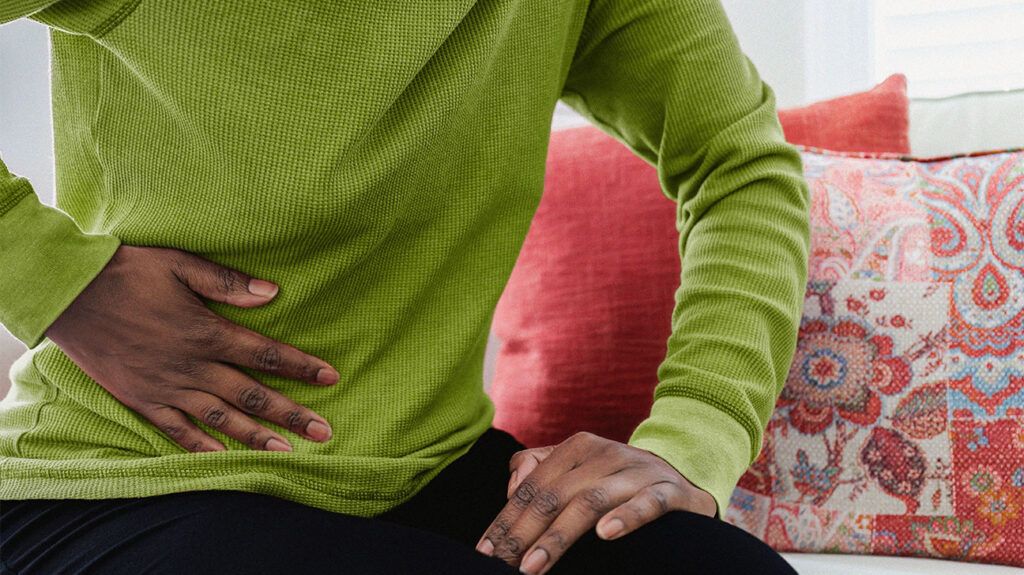Acalculous cholecystitis is an inflammation of the gallbladder that does not occur due to gallstones. Acalculous cholecystitis can be life threatening and requires prompt medical care.
It may occur as a complication of another condition, such as stroke, heart attack, extreme weight loss, or prolonged fasting.
Acalculous cholecystitis can cause pain in the upper right abdomen, which may be severe or sudden.
This article discusses the symptoms, causes, diagnosis, treatment, and outlook for acalculous cholecystitis.

Acalculous cholecystitis is a gallbladder inflammation that does not occur due to gallstones. Acalculous means there is no involvement of gallstones. Cholecystitis means inflammation of the gallbladder.
The gallbladder is a pear-shaped organ which stores bile from the liver. The gallbladder releases bile to the small intestine to help support digestion. The gallbladder sits underneath the liver, on the right side of the abdomen.
Acalculous cholecystitis
Symptoms of acalculous cholecystitis may include:
- pain in the right upper abdomen, which may worsen when breathing deeply
- abdominal pain or cramping after eating, particularly after fatty foods
- nausea
- bloating
- food intolerance
- belching
- vomiting
- fever
Acute acalculous cholecystitis can cause sudden, severe pain in the right upper abdomen. The pain may radiate to the area between the shoulder blades.
If the bile moves slower than usual through the biliary system, which includes the gallbladder and bile ducts, it
This can lead to:
- blood flow problems
- pressure ulcers
- tissue death
- perforation of the gallbladder
Causes and risk factors of acalculous cholecystitis include:
- long periods of fasting
- extreme weight loss
- total parenteral nutrition, an intravenous feeding system that bypasses the digestive system
- recovery from major surgery or requiring intensive care
- stroke
- heart attack
- sepsis
- severe burns
- long lasting trauma
Acalculous cholecystitis may affect males and females equally, although it is more likely to affect males after surgery.
Having a weakened immune system, such as through HIV, also increases the risk of acalculous cholecystitis.
To diagnose acalculous cholecystitis, doctors
This substance travels to the liver and joins the bile, entering the gallbladder and bile ducts. This shows up on a scanner to allow doctors to see how the biliary system is working.
Doctors will also give people cholecystokinin, a hormone that triggers the emptying of the gallbladder.
Doctors may also take an ultrasound or CT scan of the abdomen to check for any inflammation in the walls of the gallbladder.
Doctors may order blood tests, which can detect the signs of acalculous cholecystitis, such as elevated white blood counts or atypical liver function.
Treatment for acalculous cholecystitis involves cholecystectomy, which is a surgery to remove the gallbladder.
Doctors
People will have a general anesthetic before a surgeon operates. A surgeon will use a laparoscope, a thin tube with a light and camera on one end, to guide the surgery and remove the gallbladder.
Some individuals may require open surgery if laparoscopic surgery is not suitable. In an open surgery, a surgeon makes a larger incision into the abdomen to remove the gallbladder.
Possible complications of acalculous cholecystitis
- perforation of the gallbladder
- gangrene of the gallbladder, which may occur due to a lack of blood flow or infection
- sepsis
Possible complications of surgery to remove the gallbladder
- excessive bleeding
- infection
- damage to surrounding areas
- surgical injury to the bile or hepatic ducts
- bile leaks from the bile ducts
Acalculous cholecystitis
Over time, there is a decrease in the risk of death due to this condition, and it may now be around 10%. The risk of death may depend on age and other coexisting health conditions.
Recovery from acalculous cholecystitis may take time over the course of months.
This section answers some common questions about acalculous cholecystitis.
What antibiotics do doctors use to treat acalculous cholecystitis?
Doctors
Although antibiotics are generally ineffective for treating acalculous cholecystitis, they can help treat bacteria in the bloodstream.
How to treat acalculous biliary pain?
For mild acalculous cholecystitis, the treatments include:
- fasting, to allow the gallbladder to rest
- reducing pressure using gastrointestinal compression
- maintaining electrolyte balance
- taking antibiotics
- preventing or treating infection
A low fat diet and pain medication may also help ease symptoms of cholecystitis.
Acalculous cholecystitis is an inflammation of the gallbladder which does not occur due to gallstones. It may occur as a complication of another condition or treatment, such as major surgery, severe trauma, or extreme weight loss.
Treatment for acalculous cholecystitis may include surgery to remove the gallbladder. Acalculous cholecystitis can be life threatening, and prompt treatment is important to prevent severe complications.
